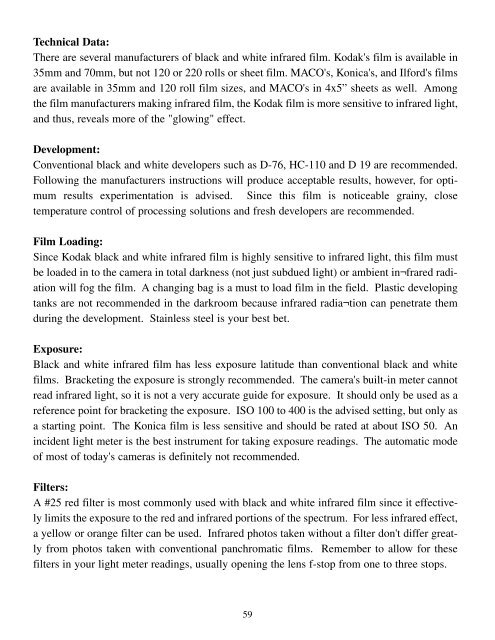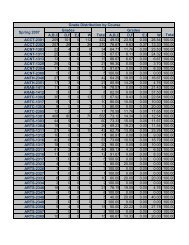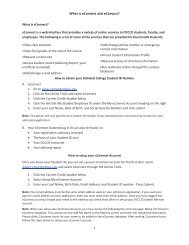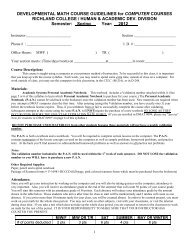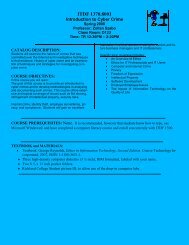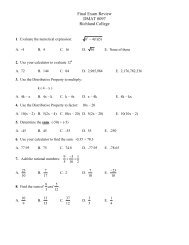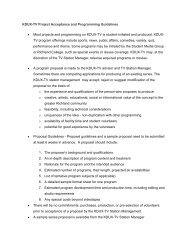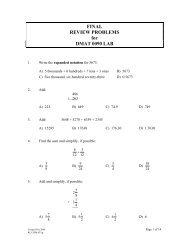Photo Lab Manual (PDF) - Richland College
Photo Lab Manual (PDF) - Richland College
Photo Lab Manual (PDF) - Richland College
Create successful ePaper yourself
Turn your PDF publications into a flip-book with our unique Google optimized e-Paper software.
Technical Data:There are several manufacturers of black and white infrared film. Kodak's film is available in35mm and 70mm, but not 120 or 220 rolls or sheet film. MACO's, Konica's, and Ilford's filmsare available in 35mm and 120 roll film sizes, and MACO's in 4x5” sheets as well. Amongthe film manufacturers making infrared film, the Kodak film is more sensitive to infrared light,and thus, reveals more of the "glowing" effect.Development:Conventional black and white developers such as D-76, HC-110 and D 19 are recommended.Following the manufacturers instructions will produce acceptable results, however, for optimumresults experimentation is advised. Since this film is noticeable grainy, closetemperature control of processing solutions and fresh developers are recommended.Film Loading:Since Kodak black and white infrared film is highly sensitive to infrared light, this film mustbe loaded in to the camera in total darkness (not just subdued light) or ambient in¬frared radiationwill fog the film. A changing bag is a must to load film in the field. Plastic developingtanks are not recommended in the darkroom because infrared radia¬tion can penetrate themduring the development. Stainless steel is your best bet.Exposure:Black and white infrared film has less exposure latitude than conventional black and whitefilms. Bracketing the exposure is strongly recommended. The camera's built-in meter cannotread infrared light, so it is not a very accurate guide for exposure. It should only be used as areference point for bracketing the exposure. ISO 100 to 400 is the advised setting, but only asa starting point. The Konica film is less sensitive and should be rated at about ISO 50. Anincident light meter is the best instrument for taking exposure readings. The automatic modeof most of today's cameras is definitely not recommended.Filters:A #25 red filter is most commonly used with black and white infrared film since it effectivelylimits the exposure to the red and infrared portions of the spectrum. For less infrared effect,a yellow or orange filter can be used. Infrared photos taken without a filter don't differ greatlyfrom photos taken with conventional panchromatic films. Remember to allow for thesefilters in your light meter readings, usually opening the lens f-stop from one to three stops.59


